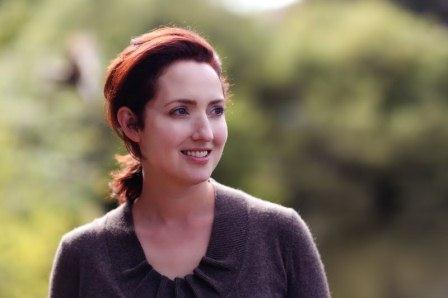Culture
The Story of This Story: An Uncommon Education

Elizabeth Percer’s An Uncommon Education is just that, quite an uncommon novel. The story is told from the point of view of Naomi Feinstein, who grows up in Brookline, Massachusetts with her father and mother. The story spans from Naomi’s childhood to her adulthood. She is a very intelligent girl, but prone to being on her own. Because Naomi is not very social, she is very direct with her audience and seems distant when discussing certain parts of herself, much like her mother.
Her Jewish father has an obsession with Rose Kennedy, and in Naomi’s childhood often takes her to visit the Kennedy’s home, which is a museum for the public. It is there that Naomi witnesses her father have a heart attack, and at the age of eight years old decides right then and there that she is to be a cardiologist, so that these types of attacks can be stopped, or at the very least prevented. Her father survives the attack, but Naomi does not return to the house until much later in her life. For his obsession with Rose, he is an excellent father and constantly encourages Naomi’s curiosity regarding the medical. Their relationship is extremely sweet, and warmed my heart.
Naomi’s mother, on the other hand, suffers from clinical depression and bears a scar on her wrist from an attempted suicide. The arrival of Naomi stops her from ever attempting it again. At the same time, her mother is very cold and withholding and discusses very little of her past and her own emotions. This isn’t to say she doesn’t love her daughter, which Naomi fully acknowledges, but that doesn’t stop her from feeling quite different from her mother. Her mother was also kicked out of her own home at the age of sixteen and later converted to Judaism.
Not long after her father is released from the hospital following his heart attack, new neighbors move in next door, the Rosenthals. This is when Naomi meets Teddy, a young boy adopted by the Rosenthals. They share a connection and often play together. They are complete comrades and confidantes. Mrs. Rosenthal does not agree with the camaraderie, as Naomi’s mother is not Jewish. She sees Naomi, at the age of nearly nine, as a shiksa, a non-Jewish temptress or seductress. It is safe to say Mrs. Rosenthal has some issues. The two continue on as friends, partly because Mr. Rosenthal is ill and seeing Teddy finally have a friend makes him happy, so there’s not much for Mrs. Rosenthal to do about it. It is around this time that Naomi admits to her audience the she has a photogenic memory; while she never explicitly uses the term, it is clear from her descriptions of remembering spelling words and other various texts. When Mrs. Rosenthal realizes this, she marches Naomi home and treats her like Satan Incarnate. Charming woman, that Mrs. Rosenthal.
When Naomi and Teddy are thirteen, Teddy’s father succumbs to illness and passes away. Shortly thereafter, the house is sold and Teddy is gone. The morning that Teddy moves away, Naomi runs from the house and keeps running, running, running until she is at a tennis court miles from her house. Her father had followed her in the car, and they play a game of tennis. This begins a running obsession for Naomi. When things become too difficult, she runs. She also continues to play tennis throughout high school. Teddy and Naomi keep in touch for a couple of years, but Teddy’s letters turn more into drawings, becoming erratic before they stop altogether.
After she is accepted to Wellesley College, which is an all-girls university not far from her home, she tries out for the school’s tennis team and is placed against a tall girl from Japan named Jun. Naomi takes an immediate dislike to Jun; she is so calm while she plays, and has clearly worked hard to be as skilled as she is. Their game is rained out, but Jun receives the spot. Naomi’s first year at Wellesley seems to pass in a blur. She sticks to her studies and works, only talking with her roommate Amy. In her second year, she runs into Jun one very early morning, and Jun talks her into joining a society that from the onset appears to be a sorority of sorts, Shakes. It’s at its plainest a type of Shakespearean appreciation group. This is where most of the drama of the story begins to unfold.
The many women that Naomi encounters help her come out of her shell, and she finally begins to experience a somewhat normal college life. But at home, her parents are keeping things from her, and Naomi discovers that her mother is sick. A strange chain of events occurs in the book once Naomi joins the Shakes. I won’t spoil anything, but there are certainly a number of things that are left unaddressed, which the reader can chalk up to Naomi not finding such things important.
One of the more interesting things about this novel is how closed Naomi is, even from herself. She is incredibly bright, and yet seems to not understand certain aspects of social interactions. When Naomi loses her virginity, it initially seems quite out of character, but it’s something that’s done, so why not do it? She is such a blend of both of her parents that it’s fascinating to watch her transformation and the major life moments she encounters. Naomi is definitely an interesting character, and the people she comes into contact with are even more so. I could write character analyses of all of them, but I won’t bore you with that.